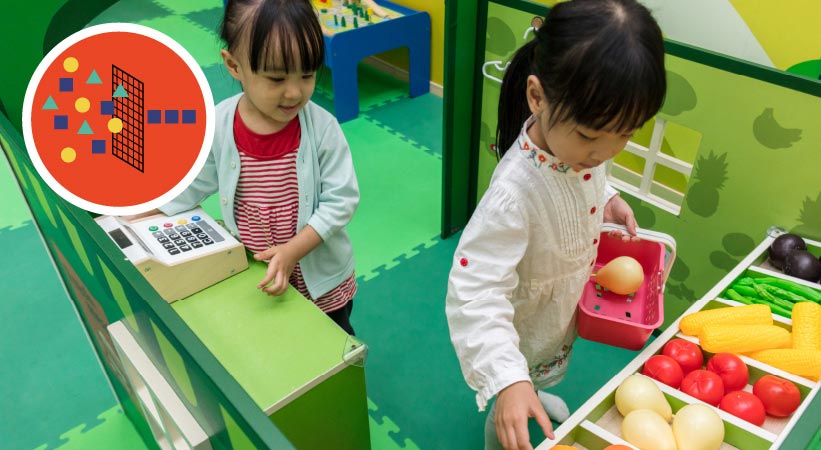
Children will set up a grocery store to practice sorting and labeling their food items into groups and subgroups. As they sort and label their groups and subgroups, discuss how this involves abstraction, which focuses on some details while ignoring others. The benefit of this sorting structure and labeling can help them more easily find the food they need.
Optional: If children are unfamiliar with the grocery store, read Max Explains Everything: Grocery Store Expert by Stacey McNulty or another book about the grocery store (before children set up their own classroom grocery store).
Explain and describe abstraction.
To introduce the sorting activity for setting up the classroom grocery store, ask children what they know about sorting food into groups and subgroups, scaffolding as needed. Invite them to share what they know about grocery stores and how they are organized.
Encourage children to work together to identify the food items and their characteristics. Prompt them to describe similarities and differences as they sort into groups.
Have them also create labels for each group reminding them that labels can help describe what is in each group because they show only the important details.
Invite children to think about how they can organize groups into subgroups. For example, if the fruit is in one basket, ask them if and how they could sort the fruit into multiple subgroups (e.g., apples vs pears, red fruit vs green fruit).